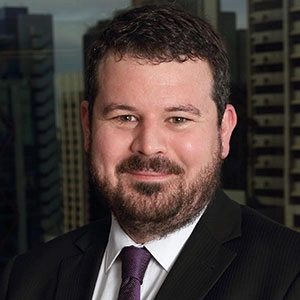Infrastructure investment to boost Rio Tinto profits
Overvalued mining stock Rio Tinto has invested in autonomous trains to speed up delivery and improve revenues.
Mentioned: Rio Tinto PLC (RIO)

With our lower forecast iron ore prices, a function of expected declining iron ore demand in China, we forecast iron ore's contribution to Rio Tinto’s (ASX: RIO) earnings to fall. However, we still expect the business to make up about one third of earnings by 2022 and be Rio Tinto's largest single source of income.
Volume guidance is reaffirmed. Rio Tinto aims to ship 330 to 340 million tonnes of iron ore in 2018 and expects system capacity to reach 360 million tonnes by the end of 2019. The ramp-up schedule is in line with our expectations.
Rio Tinto appears to be adopting a customer-focused strategy. It is getting closer to its steelmaker customers, understanding the specific needs of their blast furnaces, to better place the different iron ore products with the customers that value them the most.
In addition, Rio Tinto is building flexibility into its supply capacity, so the company can ramp up and down production in line with demand. Integration of the mine, rail and port operations allows Rio Tinto to flex production more efficiently, maximising the throughput of lowest-cost assets and using higher cost production sources for sprint capacity when the market demands it.
Further signs of cost pressure are emerging, with Rio Tinto warning it will be difficult to continue to reduce unit production costs. In addition to internal headwinds from longer haul distances and rising cyclical maintenance, management is seeing the return of inflation in labour, energy, and contractor costs. We haven't increased our cost forecasts, but this is an area we will watch.
The outlook for capital expenditure is largely as expected. Rio Tinto sees maintenance capital expenditure rising to US$3 per tonne in the next three years from US$2 per tonne as the maintenance requirements for the relatively newly built capacity starts to ramp up. Replacement mines will be substantially cheaper to build than capacity constructed through the China boom.
Automation for efficiency
Building capacity through the system is key to providing supply flexibility; mine, rail and port. At the mines, the addition of output from the new Silvergrass mine and productivity initiatives elsewhere should see capacity grow to at least 360 million tonnes. Automation of heavy equipment such as trucks and drill rigs, as well as better integration between the processing plants and the mine should improve efficiency.
Rail is the primary focus and the current bottleneck. Trains will begin fully autonomous operation within a few weeks, and over time eliminate the need to stop trains for driver changes. This increases the average speed of the trains, plus increases the efficiency of the network. The company is also focused on reducing the distance between trains, to facilitate more journeys, and incrementally raising the payload per train, by slowly growing the number of wagons per train and small increases in the ore per wagon.
Management aims to shift the volume bottleneck from rail to the port, the most capital-intensive part of the system, and thinks there’s opportunity to lift output at the port too. In December 2017, the port operated at a sprint capacity of 390 million tonnes a year. We expect key peers BHP and Vale to also be focused on incremental mine, rail, and port productivity gains.
Rio Tinto intends to flex production down when demand is softer as well. Mineral sands is not a perfect analogy, given the iron ore market is an order of magnitude larger. But as we have seen in mineral sands, being prepared to flex down supply does not guarantee low prices can be avoided.
Running a flexible volume strategy risks providing price cover for higher cost producers, such as Vale, Anglo American, or Fortescue (ASX: FMG), to expand and take market share. With the takeover bids for Atlas Iron, more aggressive competitors Fortescue, Hancock Prospecting, and Mineral Resources (ASX: MIN) are showing a willingness to expand.
More from Morningstar
• CBA demerger a positive step, says Morningstar bank analyst
• Make better investment decisions with Morningstar Premium | Free 4-week trial
Mat Hodge is a senior equity analyst covering mined commodities, Morningstar Australasia.
© 2018 Morningstar, Inc. All rights reserved. Neither Morningstar, its affiliates, nor the content providers guarantee the data or content contained herein to be accurate, complete or timely nor will they have any liability for its use or distribution. This information is to be used for personal, non-commercial purposes only. No reproduction is permitted without the prior written consent of Morningstar. Any general advice or 'class service' have been prepared by Morningstar Australasia Pty Ltd (ABN: 95 090 665 544, AFSL: 240892), or its Authorised Representatives, and/or Morningstar Research Ltd, subsidiaries of Morningstar, Inc, without reference to your objectives, financial situation or needs. Please refer to our Financial Services Guide (FSG) for more information at www.morningstar.com.au/s/fsg.pdf. Our publications, ratings and products should be viewed as an additional investment resource, not as your sole source of information. Past performance does not necessarily indicate a financial product's future performance. To obtain advice tailored to your situation, contact a licensed financial adviser. Some material is copyright and published under licence from ASX Operations Pty Ltd ACN 004 523 782 ("ASXO"). The article is current as at date of publication.

